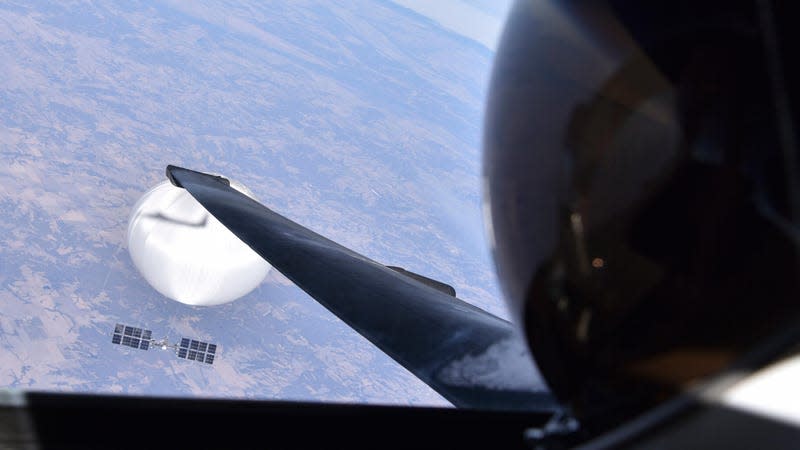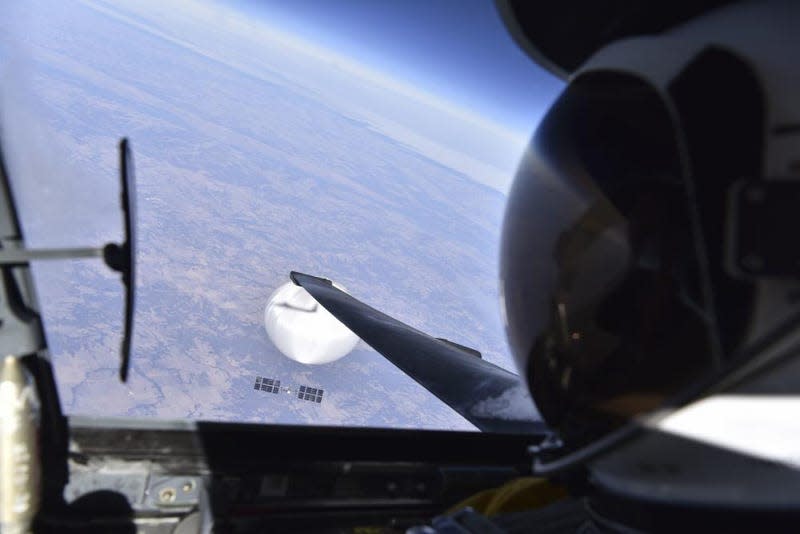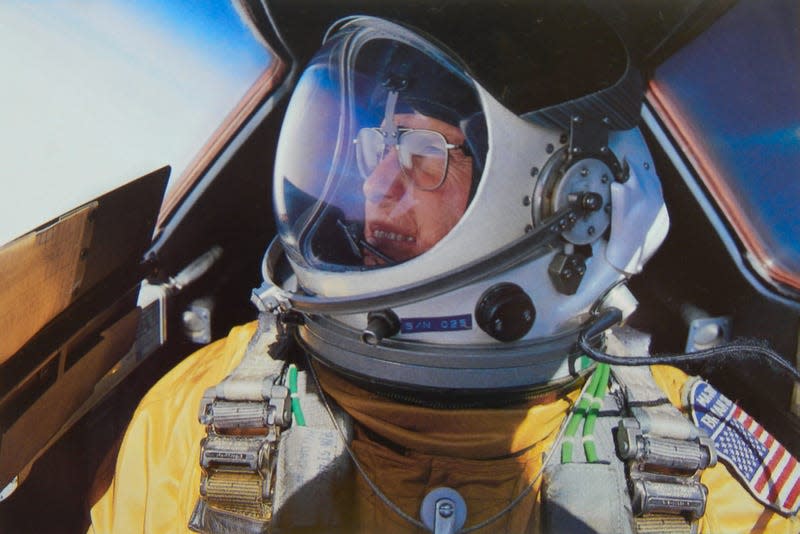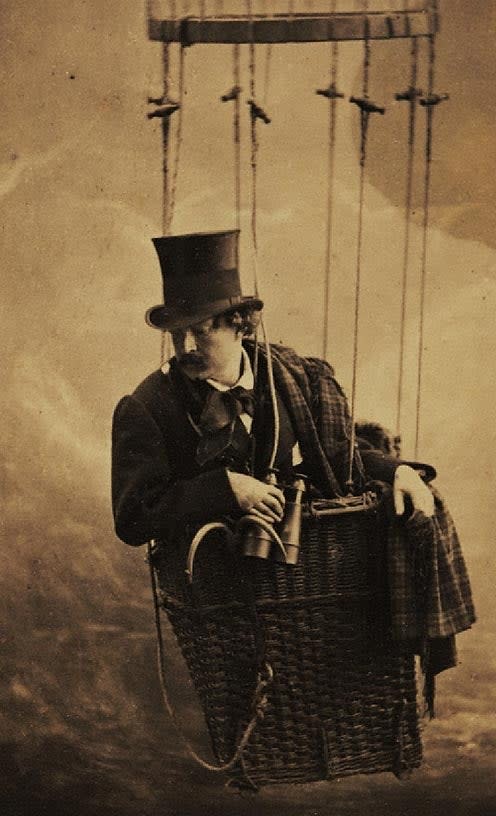The U-2 Spy Balloon Selfie and the Grand History of Pilot Self-Portraits

On February 2, as China’s high altitude balloon drifted over the continental United States, the Air Force sent two U-2 spy planes to scope it out. The planes, Cold War relics still flying fine this far into the 21st century, can operate above 70,000 feet, making them the only crewed plane that could descend to view the balloon. One of the U-2 pilots took a selfie with the balloon, the plane’s wing and the pilot’s face shield in the frame, and the U-2's shadow visible on the balloon’s dome.
This self portrait was initially classified, circulated among those with clearance as CNN reported its existence but was unable to share it. That changed on February 22, when the military released the image into the public domain, through the Defense Visual Information Distribution Service, or DVIDS.
Read more
But it’s not the only time a U.S. military pilot has taken a selfie at a particularly fortuitous moment. In light of the release of this balloon pic, let’s look back at some great pilot selfies in history. Most of these are publicly available for download, thanks to your taxpayer dollars, so we’ve provided links.
U-2 Pilot Over Central Continental United States

The photographer is clearly visible, though not publicly identified. The photo is, according to the Secretary of the Air Force Public Affairs, “courtesy of the Department of Defense.” The photo’s original caption reads “A U.S. Air Force pilot looked down at the suspected Chinese surveillance balloon as it hovered over the Central Continental United States February 3, 2023. Recovery efforts began shortly after the balloon was downed.”
While the location where the photo was taken is not specified beyond “central continental United States, an open-source analyst who goes by Samir on Twitter seems to have pinpointed the location above Bellflower, Missouri, within an hour or so of the photo’s release. Samir was able to spot the Illinois and Mississippi river valleys in the image, and using the balloon’s known path of travel, figured out the angle in the photo.
Beyond the geography, we can see the outline of the pilot’s smartphone in the reflection of the helmet, as well as a little of the cockpit. When viewed at the full 7360 x 4912 resolution, the structure of the balloon’s large sensor rig becomes clear. While the U-2's powerful cameras will give the government more insight into the specifics of the balloon’s payload, the ability to see so much in the selfie is a good starting point for anyone trying to discern what exactly the balloon was using to observe the world below.
Download the photo
U-2 Up High
U-2 Spy Plane Take Off And Flight POV Cockpit Camera
While the pilot of the Balloon Shadow Selfie remains anonymous to the public, other U-2 self portrait artists have attached their names to the photos they’ve snapped in the high-altitude jet. In this video (uploaded to YouTube from an extended, publicly available B-roll clip), Airman First Class Drew Buchanan of the 9th Reconnaissance Wing Public Affairs can be seen in a U-2 as it takes off, flies over Beale Air Force Base in California, and reaches high enough into the sky that the curvature of the earth is visible outside the cockpit.
Because U-2 pilots fly so high, their flight suits resemble those worn by astronauts. In July 2020, photographer and journalist Christopher Michel was a passenger in a two-seat U-2 trainer model, and documented his journey to the upper atmosphere. Michel writes, “The cockpit was silent for a few moments, allowing me time to reflect. I could see the blackness of the sky enveloping us. The curvature of the Earth was clearly pronounced as we leveled off just above 70,000 feet.”
Download the video
Blackbird Cockpit

Before it was retired in 1990, the SR-71 Blackbird was the Air Force’s other high-altitude crewed reconnaissance plane. While the U-2 was built for long-endurance flight, the SR-71 remains famous for its speed, cruising at Mach 3.2 and at altitudes of up to 80,000 feet.
Brian Shul, the pilot seen here, would famously tell a story about listening to aircraft below call in to air traffic control speed-checks. This game of one-upmanship continued to include an F/A-18 Hornet jet fighter pilot, who expected to have the top speed of any aircraft present... until the pilot of the fastest production aircraft in history called in.
Download the photo
High Altitude Balloon

While the high-altitude balloon that drifted across the United States was uncrewed, aeronautical pioneers have used high-flying balloons to explore the edge of space, especially early in the Cold War.
In 1957, Major David Simons ascended to an altitude of almost 102,000 feet above Minnesota, lofted by a balloon and contained in a telephone-booth sized capsule. This self-portrait was taken inside that capsule, likely somewhere above what had previously been the highest altitude achieved by a human, set by space jumper Joseph Kittinger months earlier.
Download the photo
Old Timey Balloon

In 1858, writes Jackson Krule, “Gaspard-Félix Tournachon, who used the pseudonym Nadar, captured the first aerial photographs, photographing Paris from a tethered balloon at an altitude of sixteen hundred feet.” Nadar took several self-portraits in balloon gondolas, though his use of a canvas studio backdrop makes it hard to count any of these as proper aerial selfies.

 Yahoo Autos
Yahoo Autos 